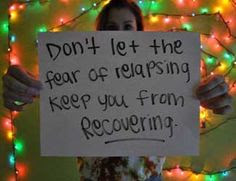This blog used excerpts from
Do I still have an “Alcoholic Mind”!?
When I first came into recovery I used to get frightened by other abstinent alcoholics proclaim that they were so glad they did not get the “wet tongue” when they saw alcohol or people drinking alcohol.
I used to feel ashamed as I did have an instantaneous “wet tongue” or mild salivation (Pavlovian response) and still do years later when I see people drinking alcohol. Is this a “craving” for alcohol, do I still want to drink? Do I still have an “alcoholic mind?“. Did I do my steps properly?
It used to churn me up, these so-called alcoholics who had no physiological response to alcohol-related “cues”. By “cues” I mean the sight, sound and smell of alcohol and alcohol related stimuli, like wine gulping , glasses clinking, people having a good time, etc.
Part me also thought it was linked to addiction severity, how bad or chronic one’s alcoholism become, how far down the line or how low your rock bottom was? There may some validity in that observation.
It was partly because of mixed messages from alcoholics that I decided to take matters into my own hands and do some research into my alcoholic brain.
What I have discovered is that I have an “alcoholic brain” and not a “alcoholic mind” and there is a huge difference.
I found there is a difference between by addicted brain that has been altered by chronic abuse of alcohol and drugs and my recovering alcoholic mind, that essence of me that is dedicated to recovery from alcoholism and addiction. These are very distinct – let me explain – on a daily basis I use my mind to help my brain recover.
For example, I meditate, I ignore the incessant chattering of my “illness”.
Both these are the function of my mind affecting the neuroplasticity of my brain.
In other words my mind is in control of my brain, the brain’s functions and structure can be shaped by my mind. This is in effect, recovery.
For example, meditation can strengthen my control over emotional states, especially negative emotional states, by building yo the neural “muscles” of brain regions which regulate emotion.
Hence my mind and brain are distinct from each other, one effects the other.
So if there are people out there relatively new to recovery, listen up.
For chronic alcoholics there is an automatic physiological response when we see cues such as other people drinking. Mild salivation, quickening heart rate etc.
These are automatic, habitual, these responses happens to us rather than us wanting or willing it to happen. It happens unconsciously without our say so!
If you get a “wet tongue” i.e. you mildly salivate, then this is what happens when you have crossed the line into chronic alcoholism.
Loads of studies have shown there is this automatic response and have also shown there is also an attentional bias to alcohol cues. We notice alcohol cues in the environment before anything else. They have a heightened “noticeableness”.
Have you ever been in a new town and counted the number of drinking establishments automatically or had a heightened awareness of half drunken bottles of alcohol lying in the street? This is an attentional bias, we notice alcohol related stuff before anything else.
Some researchers in science call this a craving. I disagree.
I call this a physiological urge, distinct from craving.
I think a craving is more akin to a “mental obsession” about alcohol.
Alcohol has only had ‘luring’ effect on me while very emotional distressed or in the early days of recovery I was very scared that I would drink but, looking back, I never had any desire to.
It is hugely important for recovering persons that we distinguish between urges and craving, in a clear manner that science seems to have been unable to do!
Lives can depend on this.
We are so vulnerable in early recover that we need sound direction on what is happening to us automatically and what we are encouraging to happen, consciously.
An urge for me is a physiological response to cues, external and internal (e.g. stress). A craving is different but interlinked.
Let me explain.
If I have an urge and it becomes accompanied by automatic intrusive thoughts such as a drink would be nice, and maybe a suggestion on where to get this drink, this does not mean I want a drink.
It is simply automatically prompted intrusive thoughts, the type of thought I used to get all the time and so became habitual, stored away in an automatized addiction schema or addiction action plan.
If I realize this and simply let these thoughts go, i.e. do not react to them, then they lessen and dissipate altogether.
This is not a craving. I have not consciously and emotionally engaged with these intrusive thoughts (although we often do in early recovery when they scare the life out of us!).
If I consciously engage, emotionally react, to these thoughts either because I want a drink (elaboration of these thoughts as in embellishing a desire state) or the thought scares the life out of me (averse reaction) I can end up in a mental obsession.
If in recovery, we try to suppress these thoughts then they will come back stronger than before which will raise already high stress levels and recruit a whole host of memories of why I should drink, with who, where, and how much I will enjoy it.
They will also activate an Alcoholic Self Schema (different to the recovery self schema still being formed in early recovery).
Then I have a memory Hydra effect where attempting to suppress this terrible flowering of desire based memories or to cut off the heads of these thoughts and memories leads to them increasing and increasing.
Then there are lots of these memories driving you crazy and scaring the life out of you. And this is in someone who does not want to drink but wants to remain in recovery!!?
The other guy who is embellishing these thoughts is kinda thinking about drinking or toying with the possibility, so but again he is reacting cognitively and consciously to these intrusive thoughts. He is elaborating on them. He is using a different more cognitive part of the brain and a different memory system to those activated when he was simply having unconscious, habitual, automatic intrusive thoughts. He is now involved in this process rather than it simply happening to him.
So what I am saying is that there is no simple urge state that automatically leads to drink. We have to cognitively and emotionally react to it.
In my time in recovery, I have rarely heard of or witnessed someone lured siren-like by a cue to a drink and when I have it is because he wanted to drink really, was testing their alcoholism, or he was in huge emotional distress and went “to hell with it!”
As we will see in later blogs, there has to be a cognitive-emotional reaction which mediates between an urge and a relapse!
If you have urges of a “wet tongue” accept this fact, that it is because you are an alcoholic. Non alcoholics are bedeviled with these things, only alcoholics are.
Thank the heavens you have had this reminder of your alcoholism. I used to replace this urge states with gratitude, and thank God for giving me another insight into my condition.









